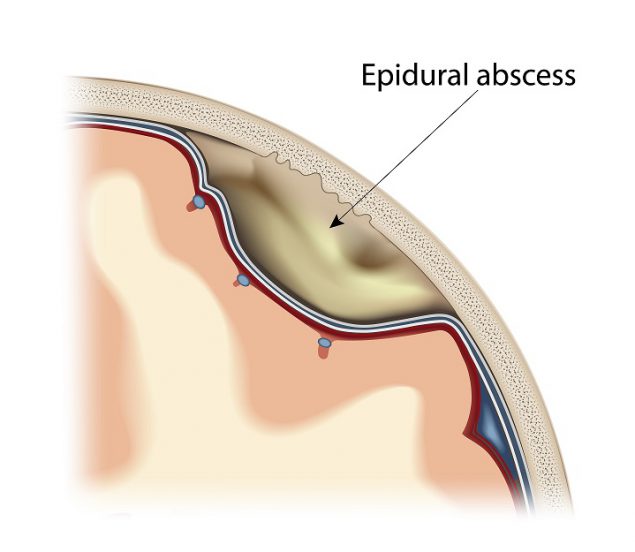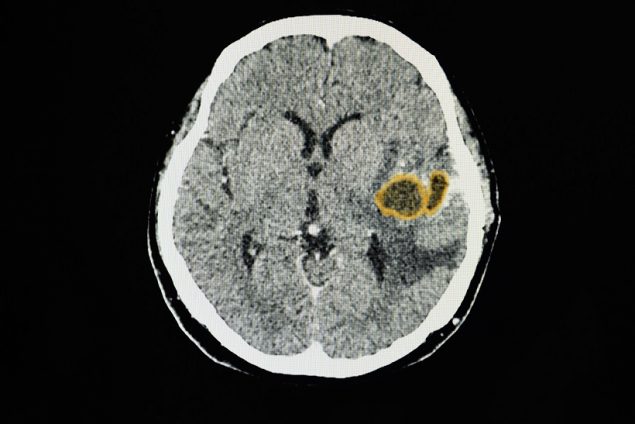What Parents Should Know about Children with Intracranial Infections Associated with Streptococcus Bacteria
- CDC investigated a possible increase in intracranial (within the head) infections in children.
- There was a large peak in infections during winter 2022–2023 compared to what was usually seen before the COVID-19 pandemic.
- High levels of respiratory viruses spreading among children during that time may have contributed to the increase.
- Despite this increase, intracranial infections remain rare in children.
- Seek medical care immediately if your child has symptoms of a head infection.
- Abscess — ab-sess
- Empyema— EM-pie-EE-muh
- Endocarditis — en-doe-car-die-tess
- Intermedius — in-ter-meed-ee-us
- Pneumoniae — new-moe-knee-ae
- Pneumococcal — new-moe-kok-uhl
- Streptococcal — strep-toe-kok-uhl
- Streptococcus — strep-toe-kok-us
Types of infections
The types of head infections CDC investigated included
- Brain abscess — a collection of pus from an infection in the brain that might put harmful pressure on brain tissue
- Subdural empyema — a collection of pus from an infection in the subdural space, which is between the outer and middle layers of membrane around the brain
- Epidural empyema — a collection of pus from an infection in the epidural space, which is the area between the skull and the thick membrane that covers the brain



Streptococcus bacteria, such as S. intermedius and S. pneumoniae, are commonly found in the nose and throat. Most children will not have any illness from these bacteria when they are found in the nose and throat. However, in rare cases the germs may spread to the brain and cause a serious infection.
What parents can do
If you have any questions about your child’s health, call your child’s healthcare provider. Other things you can do:
Symptoms of a head infection include:
- Severe headache
- Changes in personality or behavior (e.g., confusion, irritability)
- Seizures
- Changes in speech (e.g., slurred speech)
- Weakness on one side of the body
- Changes in vision, such as blurring or double vision
- Stiff neck or back
Children with head infections may also have a fever and vomit.
- All children should get vaccinated against pneumococcal disease, which helps prevent S. pneumoniae infections.
- There’s no vaccine to prevent S. intermedius infections.
- All children should be up to date with recommended vaccinations, including flu and COVID-19.
- Washing hands often
- Avoiding people who are sick
- Covering coughs and sneezes
- Not touching their eyes, nose, or mouth
Learn more about vaccines recommended for children.
About Streptococcus bacteria causing head infections
Infections of the brain are rare because the body has several defenses to protect it. One of these is the blood-brain barrier, a thick membrane that keeps germs from getting into the brain. However, in some cases, germs can get through these defenses and infect the brain.
S. intermedius is a type of bacteria that rarely causes illness. But when they do, the bacteria can cause abscesses—collections of pus. These bacteria most commonly cause abscesses in the liver and brain. They can also cause an infection in the heart, known as endocarditis. S. intermedius can affect people of all ages and cause severe illness in otherwise healthy people.
S. pneumoniae can cause many types of infections, which are collectively known as pneumococcal disease. These infections range from ear and sinus infections to infections of the lung, blood, or lining of the brain and spinal cord. Most pneumococcal infections are mild, but some can be severe. Anyone can get pneumococcal disease, but being younger than 2 years old or 65 years or older or having certain medical conditions can increase risk.
Learn more about pneumococcal disease.
Spread
Germs that can cause head infections, such as S. intermedius, are commonly found in the nose, mouth, and throat. These bacteria can enter the body and spread to the brain or the layers around the brain
- Through the bloodstream from an infection in other parts of the body, such as ears, eyes, sinuses, or teeth
- By entering the brain directly through an open wound in the head

CT scan of a patient with a large brain abscess
Rarely, children develop a head infection after a sinus infection or other respiratory infection caused by viruses or bacteria.
Diagnosis
Doctors diagnose head infections by first conducting a physical exam and obtaining a complete medical history of the patient. To confirm the diagnosis, doctors may use diagnostic tests, such as
- Magnetic resonance imaging (MRI)
- Computed tomography (CT) scan
- Blood tests
- Lumbar puncture (spinal tap)
Doctors may also collect a sample of pus to determine which germ is causing the infection.
Learn more about imaging procedures.
Treatment
Head infections can be difficult to treat. Antibiotics are used to kill the bacteria causing the infections, and surgery is often needed to drain the pus. Getting treatment quickly is important.
Complications
Even with treatment, head infections can sometimes lead to long-term neurological (nervous system) problems, such as weakness or trouble moving. These infections can also lead to the body having an extreme response to the infection, which is known as sepsis. With treatment, these infections rarely result in death.